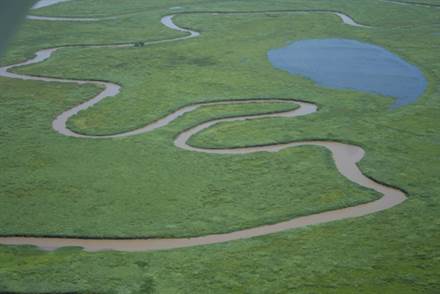
Water we doing about water?
-
Climate and disaster risks
-
Climate mitigation and adaptation
-
Coastal resilience
-
Natural infrastructure solutions
-
Peatland conservation and restoration
Did you know that the answer can be found in nature? Nature-based solutions such as restoring mangrove buffers in degraded coastal areas or preserving peatlands have the potential to solve many of our climate and water challenges, reduce vulnerability and help us adapt to a changing climate. Commemorated this year with the theme ‘Nature for Water’, World Water Day 2018 urged people to explore nature-based solutions to contemporary water problems. And UN Water focused its World Water Development Report on Nature Based Solutions for Water stating that today, more than ever, we must work with nature, instead of against it. We highlight this topic at the ‘Talanoa Dialogue’ (6 May, Bonn) to enhance ambitions on water and wetlands under the Paris Agreement through Nationally Determined Contributions (NDCs) and other long-term strategies which provide key entry-points to discuss national targets, set policies and create cross-sectoral collaboration.
Why the focus on water? Water is essential to meeting both our mitigation and adaptation goals. Yet the demand for water is set to increase in all sectors while rising temperatures are projected to further increase pressure on limited water resources. While over 90 per cent of preliminary NDCs with an adaptation component already reflect the understanding that water will be one of the major challenges to adapting to climate change, actions taken now and in the next decade will be key to ensuring that climate change adaptation and mitigation measures as well as climate finance promote positive rather than negative outcomes for water resources. The statistics show the urgency of this, for example, we have already lost around 70% of wetlands worldwide due to human activity. Activities such as rewetting drained peatlands and avoiding further peat loss can safeguard some of the largest freshwater stocks in the world, while simultaneously protecting the world’s largest terrestrial organic carbon stocks.
The water sector must deal with the complex task of securing and balancing water needs for people, industry, food production, urban and rural development, biodiversity, climate change mitigation and protecting our natural climate buffers. At the same time we are moving toward a more diversified “green” energy portfolio that includes increasing supplies from hydropower and biofuels, energy sources that are both heavily water dependent. Additionally, a continued dependence on conventional ‘grey’ (built) infrastructure in the current iteration of NDCs are set to put more pressure on water and wetlands. To date, only a small number of NDCs identify the need to protect and restore water ecosystems. Nature based solutions to these challenges attract less than 1 per cent of total investments in water resource management.
The aim should be to look for synergies and move towards greater inter-sectoral collaboration with regards to water, wetlands and land management, as well as to identify the ways in which nature based solutions can work in a complementary, cost-effective way either alongside or in place of ‘grey’ infrastructure approaches, such as the Building with Nature approach. Clear mandates from the highest policy levels can significantly accelerate nature based solutions uptake and foster improved intersectoral cooperation. Greater adoption of these practices in the revised NDCs can help us achieve our goals! Will you join us in supporting solutions that work with nature, not against it, to help achieve a resilient future for all?
Blog by Susanna Tol (Wetlands International) and Ingrid Timboe (SIWI)

